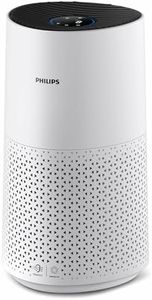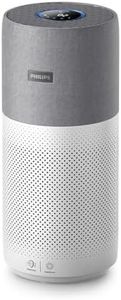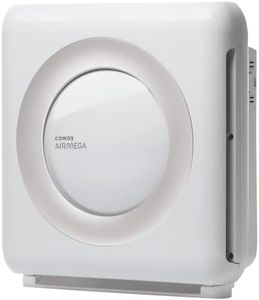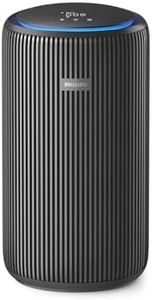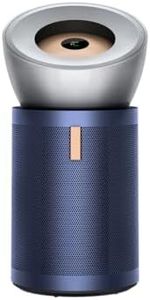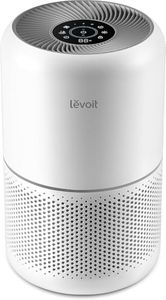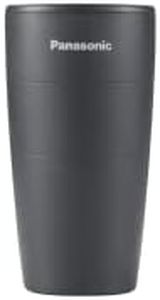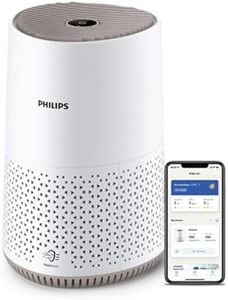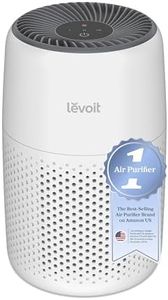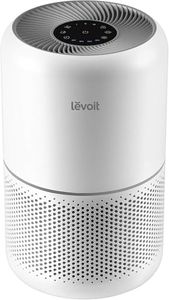We Use CookiesWe use cookies to enhance the security, performance,
functionality and for analytical and promotional activities. By continuing to browse this site you
are agreeing to our privacy policy
10 Best Hepa Purifiers
From leading brands and best sellers available on the web.Buying Guide for the Best Hepa Purifiers
When choosing a HEPA purifier, it's important to understand your space, your specific air quality needs, and which features will provide you with the cleanest and most comfortable environment. HEPA purifiers can be used for various purposes such as reducing allergies, capturing pet dander, managing smoke, or simply improving overall air quality in your home or office. Before making a decision, consider where you plan to use the purifier (size of the room), what kind of pollutants or allergens you want to tackle, and how much maintenance you’re willing to perform.HEPA Filter GradeHEPA filters come in various grades, but the standard you’ll often see is 'True HEPA' which captures 99.97% of particles as small as 0.3 microns. Some filters are labeled 'HEPA-type' or 'HEPA-like,' but these may not meet the same efficiency levels. A higher grade HEPA filter is essential if you're looking to trap very fine particles such as pollen, dust mites, or smoke. For most household needs, a standard True HEPA filter is ideal, but for people with severe allergies or respiratory issues, seeking higher grade HEPA filters may be more beneficial.
Clean Air Delivery Rate (CADR)CADR stands for Clean Air Delivery Rate and indicates how quickly and efficiently the purifier can clean the air of particles such as dust, pollen, and smoke. This value is usually measured in cubic feet per minute (CFM). The higher the CADR, the faster the purifier works. For smaller rooms, a lower CADR may be acceptable, while larger rooms or spaces with higher pollution require a higher CADR. Matching the CADR to your room size ensures effective purification: small bedrooms can make do with a lower number, while living rooms or open spaces need higher rates.
Room Size CoverageRoom size coverage tells you the maximum size of the area in which the purifier can operate effectively. This is typically given in square feet or square meters. Small to medium-sized purifiers are best for bedrooms, offices, or nurseries, while larger purifiers serve open living areas or spaces with high ceilings. Identify the room where you most need purified air and choose a model that covers a bit more than your room’s dimensions to ensure optimal performance.
Filter Replacement and MaintenanceHEPA purifiers require regular filter changes to maintain their effectiveness. Look into how often the filters need to be replaced and whether the replacement process is easy. Some filters last six months, others up to a year. If you value convenience, choose a purifier with easy-to-access filter compartments and affordable replacement filters. If you don't want to worry about frequent maintenance, opt for longer-lasting filters, but remember that regular changes are necessary for peak purification.
Noise LevelNoise level determines how loud the purifier will be during operation, often measured in decibels (dB). Quieter purifiers operate under 30 dB, which is similar to a whisper and ideal for bedrooms or offices. Medium levels range from 30-50 dB and are a good balance for living rooms, while louder models may be more suitable for larger spaces where noise is less of a concern. Decide whether you need ultra-quiet operation, especially at night, or if a bit of noise is acceptable.
Additional FeaturesSome HEPA purifiers come with extra features such as air quality sensors, automatic modes, timers, smart home compatibility, or UV-light sterilization. These add convenience but can increase complexity. If you want set-and-forget functionality or remote control, look for smart or auto-sensing features. For those who prefer minimalism and manual control, simpler models may be preferable. Pick features that fit your lifestyle and how hands-on you want to be with the device.
